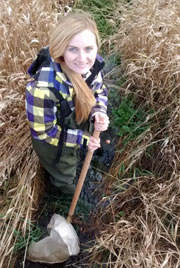Wetlands in the Frontenac Arch
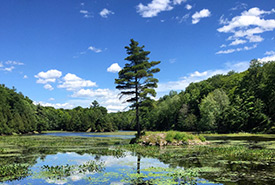
A wetland in the Frontenac Arch, ON (Photo by NCC)
Late last autumn, I was travelling with a friend through the Frontenac Arch. For me, this is a daily occurrence, but I sometimes forget that other people don’t see forests, lakes and wetlands on their morning commutes. It’s always a treat for me to watch people interact with nature, and for me to share my knowledge. The drive went something like this: "Hey, look, a wetland!" “That’s a swamp.” “Another wetland!” “That’s a marsh.” “Wetland!” “Another swamp.”
Apparently this is how conservation biologists have fun, but it did get me thinking. We talk a lot about the importance of wetlands, but most people — like my friend — don’t know much about them. Some of my favourite ecosystems are wetlands. They’re found on almost every continent (except Antarctica) and are considered to be some of the most biologically diverse natural systems in the world.
When I ask people to define a wetland, they usually say “land that’s wet,” and technically they aren’t far off. The actual definition of a wetland is “an ecosystem that is permanently or seasonally inundated with water.” So technically, some wetlands can be dry for at least part of the year.
Related blog posts
As the Nature Conservancy of Canada’s (NCC’s) conservation biologist for eastern Ontario, I work in a lot of wetlands. There are almost 32,123 acres (13,000 hectares) of wetland in the Frontenac Arch Natural Area, which includes the area currently protected by NCC. We are lucky in eastern Ontario to have large, relatively undisturbed wetlands, which provide habitat to a wide range of plant and animal species.
There are four main types of wetlands: swamps, marshes, bogs and fens.
Swamps
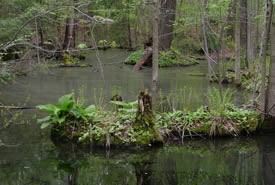
Spring swamp, ON (Photo by Mary Gartshore)
Swamps are fairly easy to recognize, because they are wetlands with trees and shrubs in them. Swamps can be made up of coniferous trees, like eastern white cedar, or deciduous trees like red maple and yellow birch. In eastern Ontario, swamps often contain a mixture of trees and shrubs, with ground vegetation like royal fern, jewelweed and wild lily-of-the-valley.
Marshes
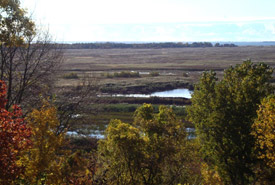
Turkey Point Marsh, ON (Photo by NCC)
Marshes conjure images of large, open water areas with swaths of billowing cattails, and they are defined as wetlands with herbaceous (non-woody) vegetation. They are often found at the edges of rivers or lakes and provide a transition zone from terrestrial environments to aquatic systems.
Bogs and fens
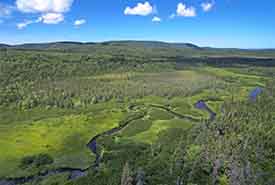
Black River Bog, NS (Photo by Mike Dembeck)
Bogs and fens are usually the lesser-known wetlands. They are rare in southern Ontario, but common throughout northern Ontario and beyond. A bog is a wetland formed by deposits of dead plant material, known as peat. Bogs are characterized by acidic soil and low nutrients. They act as vital carbon sinks. Decomposition is slow in bogs, because the saturated soil creates low oxygen levels. This traps carbon in the ground and prevents it from being released into the atmosphere.
While bogs are acidic, fens are alkaline and high in minerals. They are generally dominated by grasses and sedges. And while bogs tend to be isolated, fens are fed by surface and groundwater.
Confused yet? To sum it up, if your wetland has trees in it, then it’s probably a swamp. If it has vegetation other than trees, then it’s a marsh. If you have an acidic wetland, it’s probably a bog, and an alkaline wetland is a fen. Visually, bogs and fens can look quite similar, and I wouldn’t expect you to be carrying a pH meter with you. Of course, in real life, nature doesn’t always follow the rules, but those are a good place to start.
Wetlands don’t just provide valuable habitat; they have numerous benefits that may not be obvious. They store large quantities of water, which can mitigate flooding. They also filter and purify our water. Humans enjoy wetlands for their natural beauty, wildlife watching and recreation opportunities.
It’s important that we protect these natural areas. Unfortunately, wetlands are often drained to accommodate an expanding population. The valuable work that NCC does, not only in eastern Ontario but all over the country, helps ensure that these valuable habitats will be conserved for the long term.

